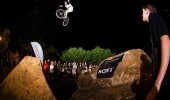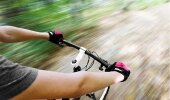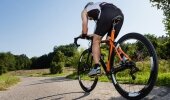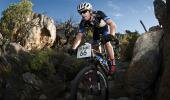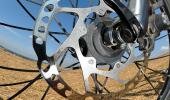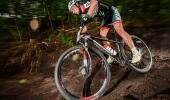Words: Various Contributors
There's just ten days to go until Johannesburg's biggest cycle race, and if you've entered and are still feeling unprepared and unsure of how you are going to make it to the finish line, read on. We have some fantastic tips and advice from specialists on nutrition, training, bike set-up and maintenance, common injuries and how to prevent them, and how to train your brain to have the best cycle race ever!
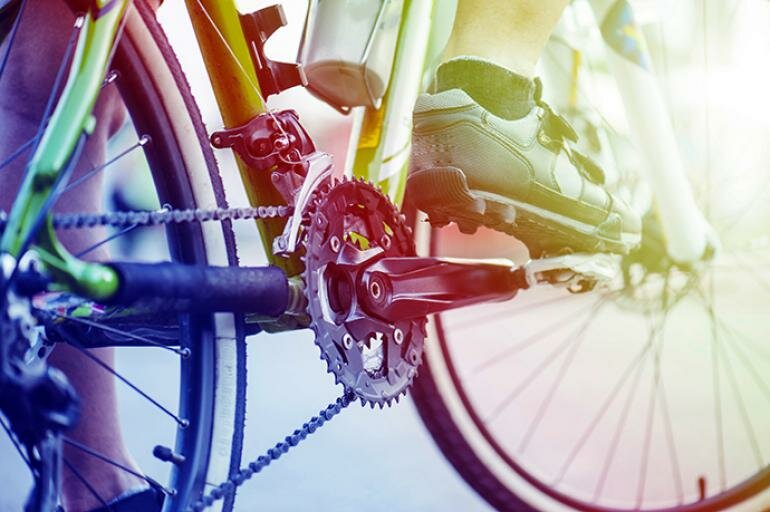
INJURIES
The Cycle of life
Words: Schalk van der Merwe, Biokineticist
Whether it is from poor form, overtraining, or a crash, injury is part and parcel of cycling. It is one of the reasons why cycling can be such a challenging activity. Although some injuries are unavoidable, most can be prevented.The following is a list of five common cycling injuries and how you can treat them.
1. Achilles tendonitis
An over-use injury caused by inflammation to the Achilles tendon, normally due to increased training intensity especially in the lead-up to a race. It is caused by poor bicycle set-up and poor cleat placement. Rest is generally the best cure for tendonitis, but ice treatment and a course of anti-inflammatories would be beneficial.
If it doesn’t occur because of overuse, then it is more than likely a biomechanical issue. Having your saddle positioned too high causes your foot to plantarflex (toe pointed down) for long periods of time, which could lead to tension. I therefore recommend that you lower your saddle slightly and ensure your cleats are not positioned too closely to the tips of your toes.
2. Patellar tendonitis
Located just below the kneecap, the tendon becomes inflamed due to possibly having a saddle that is too low and riding for long periods in big gears. This generally means that the quadricep muscles work harder and become fatigued because the gluteal muscles aren’t working as hard as they should.
Treatment should involve rest, ice, and strengthening of the quadricep muscles, physiotherapy or biokinetic rehabilitation. Prevention of the condition is important, as this curtails many a cyclist’s aspirations come race day. Try raising your seat slightly, as this will engage your hamstrings and gluteal muscles more effectively. Another good idea is to vary your cadence. Pedalling at 90-120 rpm could help reduce injury.
3. Fractured clavicle and wrist
These are the two most commonly fractured bones during a crash. They are usually the ‘weak points’ involved and absorb most of the shock, as your arms are in an extended position. Generally, these injuries require immediate medical attention. Scaphoid or wrist injuries are sometimes overlooked because they are not as painful, but impaired blood flow to the thumb could lead to complications.
It’s not always easy to prevent a bone from breaking, but it is recommended that if you are about to fall, keep holding onto your handle bars and allow your body to absorb the impact, as opposed to an outstretched hand.
4. Saddle sores
A skin disorder caused by prolonged periods in the saddle, due to the friction of your sit bones against the saddle. Old cycling shorts or a seat that is too high are the most common causes. Saddle sores can be prevented by lowering your saddle slightly to prevent excessive side-to-side movement, thus reducing friction.
5. Lower back pain
Incorrect bike fit and long periods in an aggressive riding position could lead to lower back pain.
Prevention of lower back pain comes from maintaining good flexibility and following a good core-strengthening routine. It is important to do cross-training and focus on the weaker muscles when not on the bike. Good core strength helps improve speed and allows one to stay in an aggressive riding position for longer periods.
Tapering for the big day
The main purpose of tapering is to arrive at your race feeling at your best. You have laid the groundwork and put in the miles.
Look at planning your last long ride ten days before the race. Thereafter, reduce your training load gradually. In the last week, you should be doing half the amount you normally would. You can cycle to reduce stiffness and keep legs loose even up to the day before the race, but just keep the intensity way down. Maintain a good flexibility routine throughout to ensure your muscles remain loose. Stretching and when to stretch has become a very personalised thing. Some cyclists like to have a prolonged stretch session before starting a ride, followed by a shorter one afterwards, and vice versa. There is no research to suggest which is better.
Remember to take your travel time into consideration, so that you can acclimatise and sort out any mechanical issues.
After the race
Proper post-race recovery is essential to prevent injury and ensure that you are ready for your next bout of activity a lot sooner than later. These are the most important aspects to consider. Chill out. Lying in a cold bath or ice bath could aid in reducing inflammation. Five to seven minutes should be adequate.
Stretch, roll, and massage. Allow enough time for your muscles to replenish necessary fluids before stretching and having massage. Wait 2 hours before using a foam roller and 24 hours before having deep massage.
Take a break. It is important to take time out from activity after a race, to ensure proper recovery. The duration of rest depends on the intensity and distance of the race. This could range from a few days to a few weeks. Most people focus on doing some cross-training, like swimming and yoga during this time, before slowly starting their preparation for the next race.
For more information or advice about common sports injuries, email Schalk on
MENTAL PREPARATION
Train your brain to have the best race ever!
Words: Andrea Kellerman, Educational and Sport Psychologist
When preparing for a race, people generally only train their body. We neglect our mind and don't realise how important it is to have a strong mind to achieve our goals. However, more and more athletes are recognising that it is just as important to train the mind as it is to train the body.
Everything starts in our mind. It all starts with a thought, which causes certain reactions or actions that create our belief system. If we focus on negative thoughts and belief systems, that's what we will feel and it inhibits us to reach our goals. Did you know that negative thoughts take 15-20% of your physical strength away? Hence it is vital to train your brain to have a stronger, faster, more positive race.
To replace negative thought patterns with positive ones, you need to know what your goal is. What do you want to achieve at this cycle challenge? Is your goal to finish the race because it is your first time you are doing it? Do you want to better your previous time? Do you want to stay with stronger riders? Do you want to finish in the top ten? As soon as you have established what you want to achieve, write it down and hang this piece of paper in a place where you will see it often.
Now you need to tap into your subconscious mind to help you achieve your goal. We all have a conscious and subconscious part of our mind. Your conscious mind is the part you use actively during the day. This part of the mind is only about 10% of our brain’s capacity and is the part that tells us what we should and should not do. It is the policing system of our mind and also responsible for mental setbacks. So we need to bypass our conscious mind to reach our subconscious.
Our subconscious mind is the bigger part of our mind, at about 90%, but we don’t use our subconscious mind actively. It is also the part that stores everything we have experienced, our emotions that come up automatically, and our belief systems. We need to influence this part to be able to achieve our goals more effectively.
When we relax, we cycle our brainwaves down from beta to alpha/theta. In this relaxed state, our conscious mind also relaxes (you’ll feel as if you are nearly asleep) and we can work with our subconscious mind to create new positive thoughts and belief systems. In this state, your mind doesn't know the difference between reality and fiction, so when you focus on your perfect ride, mental strength, perseverance, and achieving your goal, your mind thinks it has done it already. It stores this new belief, thus making it easier than ever before to achieve your goal.
Tips to train your brain
With ten days to go until the start of the race, here are six easy steps to train your brain, to have a positive, strong ride:
1. Focus on the positive of your race before falling asleep
Familiarise yourself with the route you will ride and pay special attention to critical points in the race. Then just before you go to sleep, visualise yourself having a great ride, where everything works out perfectly, and you will fall asleep with positivity. This will also result in having a better night’s rest and you'll wake up happier. Do this on a nightly basis.
2. Start the day visualising your perfect race
Visualising the perfect race first thing every morning will help you feel more positive and you’ll be surprised how strong and motivated you are for the cycle challenge. If you focus on any negatives, this will make you feel down, anxious, upset, and weak.
3. Positive re-affirmations
During the race, be aware of your strengths and make sure that you keep reaffirming them. If you are in a particularly hard part of the race, talk yourself through the situation with positive affirmations, such as, “I can do this,” or “I am nearly at the top of the hill.” Staying calm and positive inhibits cortisol (your stress hormone) production, thus helping you to cope better, stay in control, and be stronger. Cortisol can inhibit your strength as well. You are wasting energy while you stress, so stay calm and positive.
4. Be aware of negative thought patterns
Being more aware of your thoughts will help eliminate negative thoughts that creep up subconsciously. Tell yourself that you will not allow these negative thoughts in. It may help to visualise a protective shield around you that keeps those thoughts out. Your negative thoughts must be changed into positive thoughts by reaffirming your strengths, “I am fit and have trained enough to manage this hill.”
Also think about what you have managed to do already and break the race up into sections that you can manage systematically. Don’t focus on the whole race all at once, as it might be too overwhelming. Remain focused on your goal and repeat your positive affirmations constantly!
5. Focus on your breathing
It is important to breathe correctly throughout the race. If you stop breathing in certain situations, you are not allowing enough oxygen into your muscles and this will reduce your strength and performance. Many people stop breathing when they are anxious or nervous, so remember to breathe regularly.
6. Focus and consistency
You need to stay focused throughout the race. Many accidents happen because people lose their concentration and focus, so be aware of your concentration levels and what you are doing all times.
A consistent rhythm is also important because when you are in a consistent stride and focused on your race, you’ll be able to get to the finish line in no time.
Being focused, positive, and constantly reaffirming our strengths does not come naturally to all of us, but with a conscious effort, we can change that. If you follow these steps, your mind will be more prepared for the race and you will feel positive and stronger, thus enabling you to reach your goal more effectively.
Finally, remember to have fun!
If you are looking for a personal trainer for your mind, contact Andrea Kellerman (B.A., H.E.D., Psych Hon, Med. Psych, NF Practitioner, Adv. Dip. Hyp.) by email or visit www.eq-advantedge.co.za
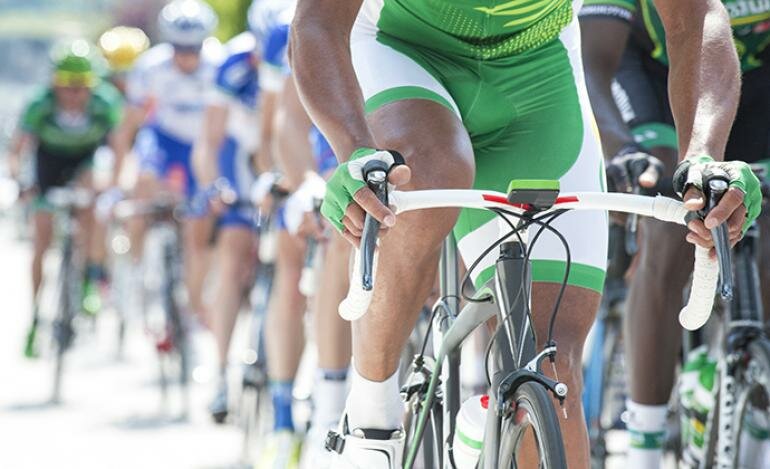
NUTRITION
Nutrition for maximum cycling performance
Words: Hannele Steyn, Lifestyle Consultant (former winner of Absa Cape Epic MTB race)
It’s just ten days before Johannesburg’s biggest cycle challenge and if you’ve suddenly realised or been told that you are not eating right, now is not the time to change your whole diet. Nor is it the time to try and lose weight, as that should have been done already :-). However, all is not lost because here are some nutritional tips and advice to help you make the best of the remaining time you have.
10 DAYS PRIOR
BREAKFAST
Start getting used to eating the breakfast you plan to eat on race day and stick to it. You also need to make sure that what you are eating is balanced and has the right amount of proteins, carbohydrates, and essential fats. Unless you are planning to have your breakfast two to three hours before the start of the race, you need to get used to eating your breakfast closer to the time you start your training. The reason for this is that your blood sugar levels dips 90 minutes after a meal, so keep this in mind when planning your nutritional intake.
Breakfast options:
• Oats porridge with 20 g of protein supplement or even better, Passion4Wholeness Oats porridge with a Twist, which contains essential fat (omega 3), protein (nuts and seeds), high glycaemic carbs for quick energy (cranberries), and low glycaemic carbs for a sustained energy level (crushed, whole rolled oats).
• Passion4Wholeness Health Muesli, which contains nuts, seeds, omega 3, raisins, cranberries, whole rolled oats, and freeze dried coconut. Have this with yoghurt, milk, or water.
• A boiled or poached egg on rye bread.
• Peanut butter/almond butter and honey on rye bread.
• Bovril or marmite with cottage cheese and tomato on rye bread.
• Avocado and cottage cheese on rye bread.
Tip: Stay away from foods that are too oily, fibrous, or spicy.
Mid-morning snack options:
Eat a snack every day about two hours after breakfast.
• Nuts (raw) and dates or goji berries.
• Game biltong.
• Fruit and plain yoghurt.
• A protein shake.
LUNCH
In the last ten days, you should be tapering down on your training and resting more. So try to eat most of your carbs during the day rather than at night, to avoid unnecessary weight gain.
Lunch options:
• Brown basmati rice, rice noodles, or a baked potato / baked sweet potato with any lean protein and a salad (lettuce, tomato, avo, and cottage cheese).
• Sushi and salad.
• Rye bread with any protein topping.
Tip: Avoid fatty sauces or toppings and fried foods.
Afternoon snack options:
• Same as the mid-morning snacks.
DINNER
Dinner option:
• Any lean protein with lots of vegetables and salad.
Late night snack options:
• Protein shake.
• Plain yoghurt.
Three days prior to the race, start to add a little more low glycaemic carbs to your diet, such as an extra slice of rye bread, an extra potato, or helping of rice, etc. Also add more starchy vegetables, like carrots, peas, and corn. The reason for increasing your carb intake is so that your body can store the carbs as glycogen in the blood, liver, and muscle, and use it whilst racing.
You don't need to over load, as was recommended in the past, because too much carbs will cause water retention, a drop in blood sugar, and unnecessary weight gain. This is why I am still a firm believer in keeping it balanced with all three food groups. It’s also important that you don't over eat at this point, but don’t go hungry either.
Drink at least two litres of water per day. On the day prior to race day, mix 750 ml water with your energy drink and drink that slowly during the day as well.
RACE DAY
Breakfast
Come race day, you will be up early and eating your breakfast quite early, too. So from the time you open your eyes, your body will start burning fuel and a lot of the stored glycogen will be used while you are warming up, walking, around, and so on, and not just during the race. To prevent the depletion of glycogen in your blood, liver, and muscles before the race, start sipping on quite a diluted energy drink about 45 minutes after breakfast, right up to 15 minutes before the start. You only need to take in about 300- to 500 ml. Something else you may want to consider is having a gel 15 minutes before the start. My recommendation is PVM Octane gel, as it contains whole proteins and MCT fats.
To keep your blood sugar level stable, don’t snack on high glycaemic carbohydrates only. If you only snack on things like fruit and sweets, you will get a dip in blood sugar. So make sure the drink you sip on contains whole proteins, or snack on a few nuts with your energy drink before the start.
During the race
Stick to the products you know and don't overload on a bunch of sugary eats. Pack nuts and dates, and even a sandwich if you are going to spend longer than five hours on the bike. If you think you will be on the bike at the time you normally eat lunch, your body will be expecting normal food, thus another reason to have a sandwich handy. A sandwich with either peanut butter and honey, marmite, cottage cheese, or powdered biltong with cottage cheese works well. Bananas are ok, but will only sustain your energy levels for about 40 minutes. PVM bars or Enduren energy bars are good, as well as nougat containing nuts. Keep your gels for the last 15 km or try the PVM Octane gels, which contain whole proteins and MCT fats. Consume at least 500 - 750 ml of liquid (energy drink and water) every hour and eat something small every 45 minutes.
After the race
You’ve finished the race, so now you need to put on something warm and then go for a short cool-down spin. Drink a good recovery drink that contains high carbs and a little protein, such as milk (flavoured or plain) or yoghurt (Yogi Sip). The protein will help transport the carbs to the muscles to replace your glycogen stores. The best time to take protein for the recovery of the muscles is an hour before you go to sleep.
Once you've had your recovery drink, you need to get some real, wholesome food as quick as you can. However, if all you want to do after the race is celebrate, then enjoy a beer, wine, coffee, or whatever you want because you deserve it - and don't forget to congratulate yourself on your fantastic achievement.
Day after the race
In the days following the race, continue to follow your healthy eating plan for the next event. Not only will it make you feel good, it will make it so much easier to prepare yourself.
If you would like to find out more about eating right and eating plans, contact Hannele on
BIKE SET-UP & RACE PLANNING
Having your best Momentum 94.7 Cycle Challenge yet
Words: Hanco Kachelhoffer, Professional Cyclist (Team EAI South Africa)
With the Momentum 94.7 Cycle Challenge just around the corner, many cyclists start getting nervous about the last few days prior to race day. I have done the race every year for the last 12 years and here are a few tips and tricks to help you have your best race yet.
Training
Most of your training would be done by now, if not, nothing will improve your fitness much more over the last 10 days. The trick is rather to go into the race fresh, mentally looking forward to race hard, and ready to give everything on the day. Many professional cyclists believe in losing 10% fitness prior to a big event, to try to achieve the perfect balance between fitness and being well rested.
Keep riding for the few days prior to the race. Don't stop training completely, as you want to keep your muscles active and not go into shut-down mode. Half your normal training hours and shorten any intervals you normally do. It's a good idea to take a complete rest day two days before the race.
Bike setup and maintenance
If you are new to cycling and did not check your bike setup in advance to the race, it's a good idea to use the last ten days to make sure everything is correct. Changing your setup is risky, but I've seen many riders looking really uncomfortable on race day, so a setup will prove to be well-worth doing. It is the one thing that could improve your power on the bike for the big race.
Use this time to also make sure that everything on your bike is in a good working order. Check your tyres for any cuts, and make sure you get a tube and CO2 canister from the expo.
Race planning
Plan your race in your head before you start. Look at the profile and be realistic about your fitness, strengths, and weaknesses. It's a fast, but hard route, with the real challenge being the last 30 km from the N14 Highway. Always keep something in reserve for when the road starts going uphill. The idea is to finish strong, thus always riding within yourself and not wasting energy where others would be saving. Try find a group that pulls you along, and save your strength for the last few kilometres.
Make sure you have sufficient race food and drinks with you to consume during the race. One energy bar per hour is enough, have two gels for the last 30 km and a proper energy drink. When filling your bottles at a feed zone, rather use water and get your sugars from your energy bars. Many times the mix is too strong and may cause you to dehydrate and cramp.

